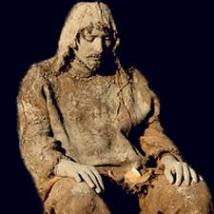“And I will grant authority to my two witnesses, and they will prophesy for 1,260 days clothed in sackcloth.” (Revelation 11:3)
What was sackcloth and why were they ordered to wear it? I imagined the sackcloth as something unappealing and brown. I immediately thought of an old phrase that involves a person looking like they are wearing a sack of potatoes. The sackcloth must have been important in some way, or it wouldn’t have mattered what they wore to go witness. I thought maybe they were ordered to wear sackcloth because it made them humble. Maybe the sackcloth was a test, if the witnesses were true to God and were willing to do whatever he asked of them. I also wondered if it was common to see certain people dressed in sackcloth. Maybe only the poor wore the sackcloth. I also wondered what the sackcloth was made from.
As I researched I found that the sackcloth is a sign of mourning. These two witnesses are clothed in sackcloth because they are officially in mourning. My next question is what are the witnesses mourning about? As Christians do we not mourn when we are inhibited and or persecuted for spreading the love of the Gospel? In this case, the mourning that warrants the wearing of sackcloth is in direct response to the suppression of the Roman Catholic power persecuting anyone that would speak the Oracles of God. The mourning was the act of witnessing about the Gospel.
I also found what the sackcloth was made from.Although the modern-day idea of “wearing sackcloth” is often that of someone dressed in a burlap grain bag with head and arm holes cut in it, during Bible History its appearance was quite different. Sackcloth was most often made of coarse, black goat’s hair. As its name indicates, it was used for sacks, but was also customarily worn by mourners (in some countries, the ancient custom is still faintly seen today when mourners wear black arm bands at funerals), or as a sign of deep repentance and humility. Also, sackcloth was, and will be (in some contemporary form), in the case of the two witnesses, worn by some Prophets. The sackcloth was obviously something that was uncomfortable to wear.
The more I researched I found that the witnesses may have not actually wore the sackcloth. Prophets were also told to wear sackcloths as well from time to time, a symbol of lamentation and judgment, such as Jeremiah. Now, will the two witnesses ACTUALLY wear sackcloth, I would tend to think not and that this is a metaphor of what the two witnesses will be doing: lamenting over Israel, proclaiming and teaching the word of God and that Jesus is their Messiah as well as prophesying. The sackcloth may or may not have been worn. It is subject to one’s own interpretation. The known fact is that sackcloth was not something that people would want to be wearing. The fact that they wore the sackcloth was a symbol of their faith.










